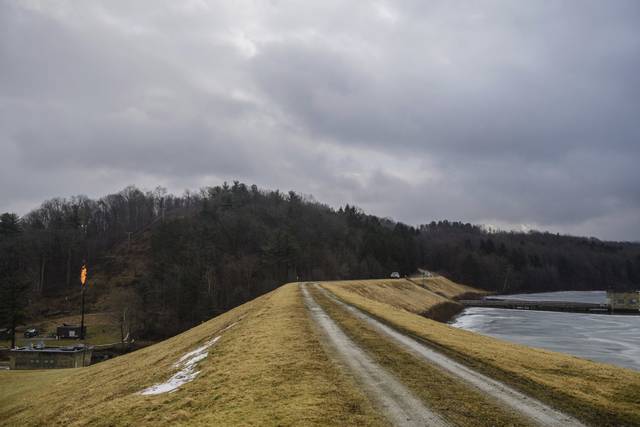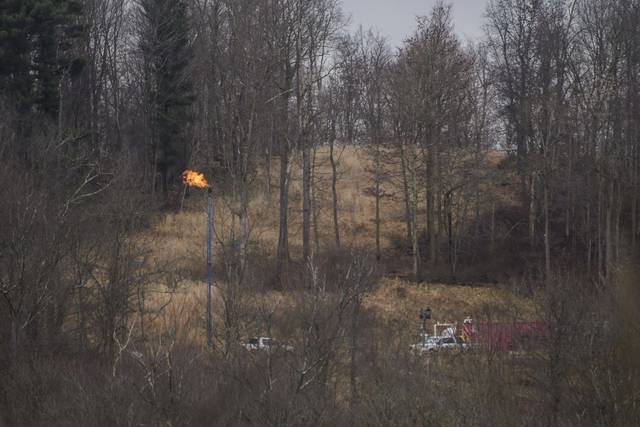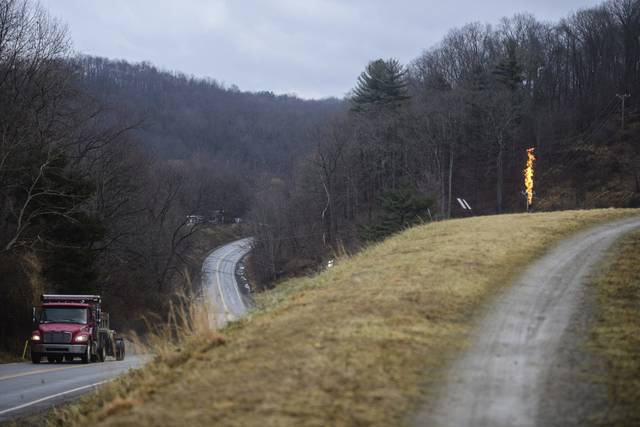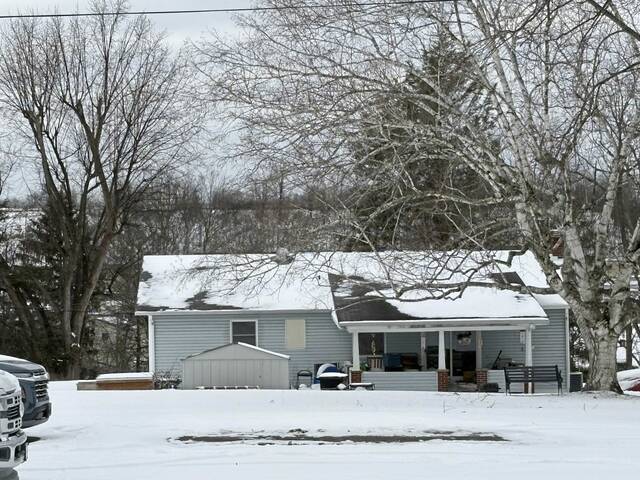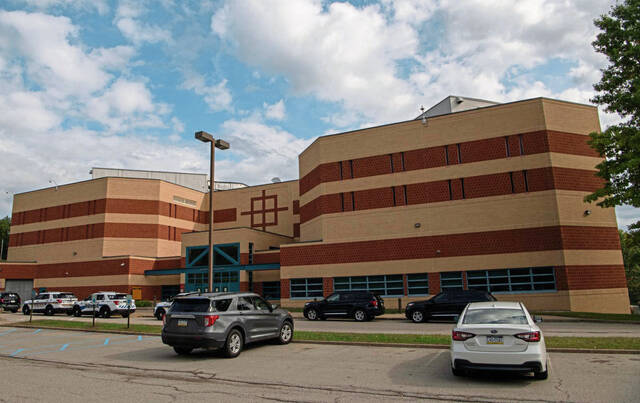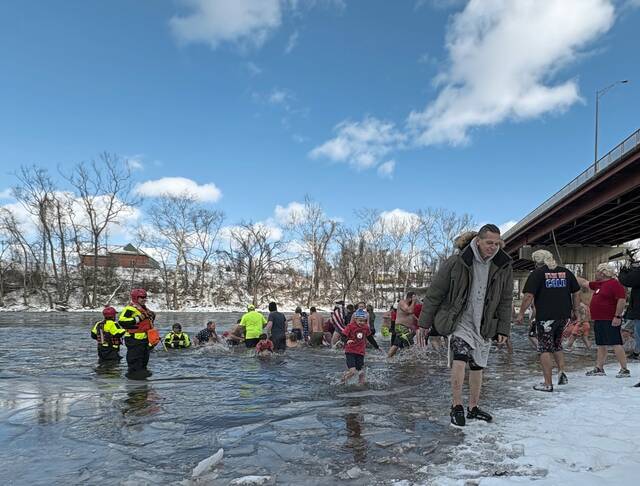CNX Resources contained a Utica shale gas well that experienced a significant drop in pressure last week, the company said Tuesday.
Well “killing” operations on Shaw 1G well in Washington Township began at about 5 p.m. Monday and were completed by 11 p.m., said Lauren Fraley, spokeswoman for the state Department of Environmental Protection’s Southwest Regional Office. Killing involves pumping heavy mud and cement into the well, essentially sealing it off.
“We are still evaluating next steps for the Shaw 1G well and the other three wells on that pad,” CNX spokesman Brian Aiello said, noting well drilling was completed Jan. 5 and fracking started the next day.
The Canonsburg-based company experienced a significant loss of pressure with the new well during fracking operations Jan. 26, Fraley said. The pressure decrease was accompanied by “potential communication with other nearby conventional wells,” she said.
CNX has since expanded flaring to nine conventional wells in the vicinity of the Shaw 1G well, she said. The DEP describes flaring as a combustion device used to control emissions by burning off flammable gas, often to reduce pressure.
In the meantime, fracking operations on the four-well Shaw pad, on the northwestern side of Beaver Run Reservoir, have been suspended while CNX investigates the cause of the incident, the company said in a statement.
“We believe it is isolated to this well,” the statement said.
Fracking has been occurring near Beaver Run Reservoir, source of water to about 130,000 people in northern Westmoreland County, since 2011. The seven CNX well pads on property owned by the Municipal Authority of Westmoreland County currently have 45 Marcellus wells and seven Utica wells, the company said.
The municipal authority operates the George R. Sweeney Water Plant at Beaver Run Reservoir, which serves 23 communities in northern Westmoreland County and small portions of Armstrong and Indiana counties. Both CNX and the municipal authority have said there has been no impact to the reservoir and the situation is being closely monitored.
The DEP has received no complaints or reports of issues with private water wells in the area, Fraley said.
“DEP has no knowledge, reports or observation of a pollution event resulting from this incident. The department will continue to monitor the situation and investigate,” she said.
Although southwestern Pennsylvania is known for Marcellus shale production, CNX has shown an increasing interest in the deeper Utica shale in Westmoreland County and elsewhere.
CNX drilled four deep, dry Utica wells on the Shaw pad last year, including the one that experienced a pressure anomaly while pumping last week, Andrea Passman, vice president for exploration and development, said during a recent conference call with investors. Reservoir pressure of the Shaw well is consistent with other Utica wells in the area, including the Bell Point 6 well just north of Shaw, Passman said.
“We’re working judiciously to make sure we get the Utica right out of the gate,” Passman told investors. “We’ve seen too many other playmakers rush into decisions about well spacing that is too wide or too tight, trial-and-error completion methodologies and undersized midstream build-outs that leave billions of dollars of (net asset value) on the table or, in this case, in the ground.”
Utica shale production was up slightly in the fourth quarter of 2018, driven in part by an increase in activity in southwestern Pennsylvania, according to the CNX quarterly report.
Stephen Huba is a Tribune-Review staff writer. You can contact Stephen at 724-850-1280, shuba@tribweb.com or via Twitter @shuba_trib.



